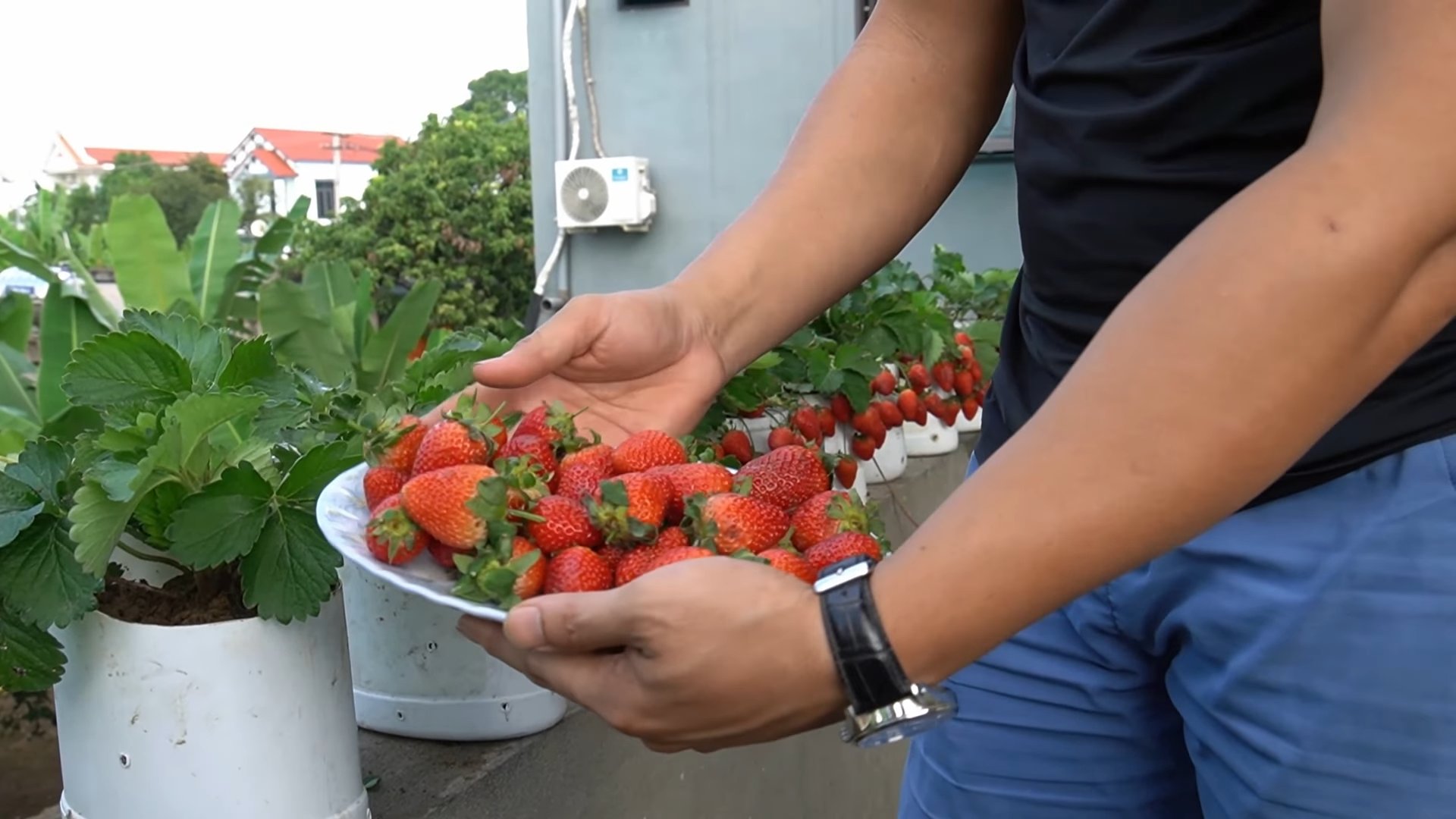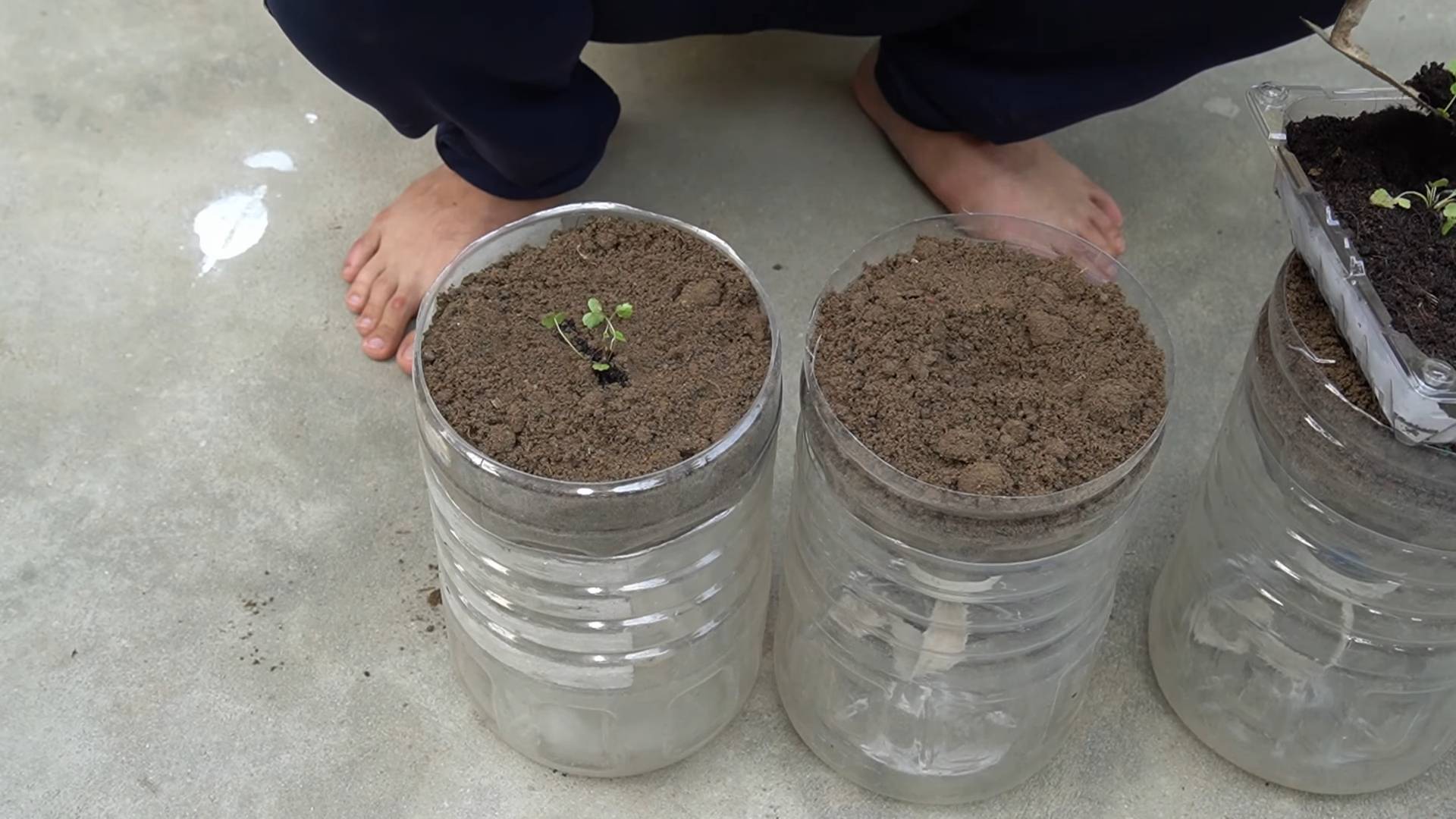Store Strawberries Longer? Yes, you read that right! Imagine biting into a perfectly ripe, juicy strawberry days after you bought them, instead of finding a mushy, moldy mess. We’ve all been there, haven’t we? That beautiful punnet of strawberries, bursting with promise at the grocery store, only to turn into a disappointing science experiment in your fridge within a few days.
Strawberries have been cherished for centuries, with evidence of their cultivation dating back to ancient Rome. They weren’t just a tasty treat; they were often associated with love and fertility. Today, while we might not be using them in love potions, we certainly love having them around! But their delicate nature makes them a challenge to keep fresh.
That’s where this DIY trick comes in. In this article, I’m going to share a simple, yet incredibly effective method to store strawberries longer, preventing that heartbreaking premature spoilage. This isn’t just about saving a few bucks; it’s about reducing food waste, enjoying fresh, healthy snacks, and making the most of those delicious berries. So, ditch the disappointment and get ready to unlock the secret to longer-lasting strawberries!

How to Keep Strawberries Fresh for Weeks: My Foolproof DIY Guide
Okay, strawberry lovers, listen up! I’m about to share my secret weapon for keeping those juicy, red berries fresh and delicious for way longer than you ever thought possible. We’ve all been there – you buy a beautiful container of strawberries, excited for smoothies, snacks, or maybe a decadent dessert, only to find them turning mushy and moldy within days. It’s a tragedy, I tell you! But fear not, because I’ve perfected a simple DIY method that will seriously extend their shelf life. Get ready to say goodbye to wasted strawberries and hello to weeks of berry bliss!
What You’ll Need
Before we dive in, let’s gather our supplies. This isn’t a complicated process, thankfully. Here’s what you’ll need:
* Fresh Strawberries: Obviously! Choose berries that are firm, bright red, and free from any visible mold or bruising. The fresher they are to begin with, the longer they’ll last.
* White Vinegar: Plain old white vinegar is the star of this show. Don’t worry, your strawberries won’t taste like vinegar, I promise!
* Water: Tap water is perfectly fine.
* Large Bowl: Big enough to hold all your strawberries comfortably.
* Colander or Salad Spinner: For rinsing and drying the berries.
* Paper Towels: Lots of them!
* Airtight Container: This is crucial for keeping the strawberries fresh in the fridge. I prefer glass containers, but plastic works too. Make sure it has a tight-fitting lid.
The Vinegar Bath: Your Strawberry Savior
The key to this whole process is a vinegar bath. Vinegar kills mold spores and bacteria that cause strawberries to spoil quickly. Don’t be scared – the vinegar taste will be completely washed away, leaving you with perfectly fresh berries.
1. Prepare the Vinegar Solution: In your large bowl, mix one part white vinegar with ten parts water. For example, if you’re using 1 cup of vinegar, add 10 cups of water. This dilution is important to avoid affecting the taste of the strawberries.
2. Soak the Strawberries: Gently add your strawberries to the vinegar solution. Make sure they’re all submerged. Let them soak for about 5-10 minutes. This allows the vinegar to do its magic and eliminate those pesky mold spores.
3. Rinse Thoroughly: After soaking, drain the strawberries in a colander. Rinse them very, very well under cold running water. This is essential to remove any trace of vinegar. I usually rinse them for a good minute or two, making sure every berry is thoroughly cleaned.
Drying is Key: Preventing Moisture Buildup
Moisture is the enemy of fresh strawberries. If they’re stored wet, they’ll spoil much faster. So, drying them properly is absolutely crucial.
1. Gentle Drying: Spread a layer of paper towels on a clean surface. Carefully arrange the rinsed strawberries on the paper towels in a single layer. Avoid overcrowding them.
2. Pat Dry: Gently pat the strawberries dry with more paper towels. Be careful not to bruise them. You want to remove as much surface moisture as possible.
3. Air Dry (Optional): For even better results, let the strawberries air dry for about 30 minutes to an hour after patting them dry. This allows any remaining moisture to evaporate. I usually leave them on the counter, uncovered, until they’re completely dry to the touch.
The Storage Solution: Creating the Perfect Environment
Now that your strawberries are clean and dry, it’s time to store them properly. This is where the airtight container and paper towels come into play.
1. Line the Container: Line the bottom of your airtight container with a few layers of paper towels. These paper towels will absorb any excess moisture that might accumulate in the container.
2. Arrange the Strawberries: Carefully arrange the dried strawberries in the container in a single layer. Again, avoid overcrowding them. If you have a lot of strawberries, you might need to use multiple containers or create layers with paper towels in between.
3. Add Another Layer of Paper Towels: Place another layer of paper towels on top of the strawberries. This will help absorb any moisture from the top layer of berries.
4. Seal the Container: Securely seal the airtight container with its lid. Make sure the lid is tightly closed to prevent air from getting in.
5. Refrigerate: Store the container of strawberries in the refrigerator. I usually keep them in the crisper drawer, but any shelf in the fridge will work.
Maintaining Freshness: A Few Extra Tips
To keep your strawberries fresh for as long as possible, here are a few extra tips:
* Check Regularly: Every few days, check the strawberries for any signs of spoilage. Remove any berries that are starting to turn mushy or moldy to prevent them from affecting the rest of the batch.
* Replace Paper Towels: If the paper towels in the container become damp, replace them with fresh, dry paper towels. This will help maintain a dry environment and prevent mold growth.
* Don’t Wash Before Storing (Unless You’re Doing the Vinegar Bath): If you’re not planning on doing the vinegar bath method, don’t wash your strawberries before storing them. Washing them introduces moisture, which can lead to spoilage. Wash them only when you’re ready to eat them.
* Consider Freezing: If you have more strawberries than you can eat before they start to go bad, consider freezing them. Frozen strawberries are great for smoothies, baking, and other recipes. To freeze them, wash, dry, and hull them, then spread them out on a baking sheet and freeze them until solid. Once frozen, transfer them to a freezer bag or container.
* Don’t Hull Before Storing: Leave the green tops (hulls) on the strawberries until you’re ready to eat them. Removing the hulls creates an opening for moisture to escape and bacteria to enter, which can shorten their shelf life.
Troubleshooting: Common Issues and Solutions
Even with the best methods, sometimes things don’t go exactly as planned. Here are a few common issues you might encounter and how to solve them:
* Strawberries Still Getting Moldy: If your strawberries are still getting moldy despite following these steps, it could be due to a few reasons. First, make sure you’re using fresh strawberries to begin with. If they’re already starting to spoil when you buy them, they won’t last as long. Second, ensure you’re rinsing the vinegar solution thoroughly. Any residual vinegar can affect the taste and texture of the berries. Third, make sure you’re drying the strawberries completely before storing them. Moisture is the biggest culprit when it comes to mold growth. Finally, check your refrigerator temperature. If your fridge is too warm, it can accelerate spoilage.
* Strawberries Tasting Like Vinegar: If your strawberries taste like vinegar, it means you didn’t rinse them thoroughly enough after the vinegar bath. Make sure to rinse them under cold running water for a good minute or two, ensuring every berry is completely clean.
* Paper Towels Getting Soaked Quickly: If the paper towels in your container are getting soaked quickly, it means there’s too much moisture in the container. This could be due to the strawberries not being dried properly before storing them, or it could be due to condensation forming inside the container. Make sure to dry the strawberries thoroughly and replace the paper towels frequently. You can also try adding a desiccant packet (like the ones that come with electronics) to the container to absorb excess moisture.
* Strawberries Becoming Mushy: If your strawberries are becoming mushy, it could be due to a few reasons. First, make sure you’re not overcrowding the container. Overcrowding can cause the berries to bruise and become mushy. Second, handle the strawberries gently to avoid bruising them. Third, check your refrigerator temperature. If your fridge is too cold, it can damage the berries.
Enjoy Your Fresh Strawberries!
And there you have it! My tried-and-true method for keeping strawberries fresh for weeks. I’ve been using this technique for years, and it’s saved me so much money and prevented countless strawberry tragedies. I hope it works just as well for you. Now go forth and enjoy your delicious, long-lasting strawberries! You can thank me later when you’re still enjoying fresh berries weeks after buying them. Happy snacking!

Conclusion
So, there you have it! This simple, yet incredibly effective, DIY trick for storing strawberries longer is a game-changer for anyone who loves these juicy red berries but hates watching them turn moldy and mushy before their time. We’ve all been there – buying a beautiful container of strawberries, only to find half of them spoiled within a few days. This method, using a simple vinegar wash, combats the mold spores that are the primary culprits behind strawberry spoilage, extending their freshness and allowing you to enjoy them for significantly longer.
Why is this a must-try? Because it saves you money! Think about how much you spend on strawberries each year, and how much of that ends up in the trash. By implementing this easy technique, you’ll drastically reduce food waste and get more bang for your buck. Beyond the financial benefits, it also saves you time and effort. No more daily sorting through your strawberries, picking out the bad ones and feeling guilty about throwing them away. You’ll have more time to enjoy your berries, whether you’re snacking on them fresh, adding them to your breakfast cereal, or using them in your favorite recipes.
But the benefits don’t stop there. This method also helps to preserve the flavor and texture of your strawberries. By preventing mold growth, you’re ensuring that your berries stay plump, juicy, and delicious for longer. No more soft, mushy, or off-tasting strawberries! You’ll be able to enjoy the full, vibrant flavor of fresh strawberries for days after you bring them home.
Looking for variations? Absolutely! While the vinegar wash is the core of this method, you can experiment with different types of vinegar. White vinegar is the most common and readily available, but you could also try using apple cider vinegar for a slightly different flavor profile. Just be sure to use a diluted solution to avoid affecting the taste of the berries. Another variation is to add a paper towel to the bottom of your storage container to absorb any excess moisture. This can further help to prevent mold growth and keep your strawberries fresh. You can also try using a salad spinner to thoroughly dry the strawberries after washing them, ensuring that no excess water remains.
This DIY trick is truly a game-changer for strawberry lovers!
We wholeheartedly encourage you to try this DIY trick for storing strawberries longer. It’s quick, easy, and incredibly effective. Once you’ve experienced the difference it makes, you’ll never go back to storing your strawberries the old way.
And finally, we want to hear from you! Have you tried this method? What were your results? Do you have any tips or variations to share? Leave a comment below and let us know. Your feedback is valuable and helps us to improve our recipes and tips. Let’s work together to reduce food waste and enjoy fresh, delicious strawberries for longer! Share your experience and let’s all benefit from this simple yet powerful technique. We are confident that you will find this method invaluable for keeping your strawberries fresh and delicious.
Frequently Asked Questions (FAQ)
1. Why does the vinegar wash work to store strawberries longer?
The vinegar wash works because vinegar is a natural disinfectant. It kills mold spores and bacteria that cause strawberries to spoil quickly. Strawberries are particularly susceptible to mold growth because of their delicate skin and high moisture content. The diluted vinegar solution effectively eliminates these microorganisms without significantly affecting the taste or texture of the berries. The acetic acid in vinegar disrupts the cell membranes of mold and bacteria, preventing them from multiplying and causing spoilage. This simple step significantly extends the shelf life of your strawberries, allowing you to enjoy them for days longer.
2. Will the vinegar wash affect the taste of my strawberries?
No, the vinegar wash should not significantly affect the taste of your strawberries, provided you use a diluted solution (1 part vinegar to 10 parts water) and rinse the berries thoroughly after washing. The small amount of vinegar that remains on the berries after rinsing is negligible and will not impart a noticeable vinegar flavor. If you are concerned about the taste, you can use a slightly weaker vinegar solution or rinse the berries more thoroughly. Some people even find that the slight acidity of the vinegar enhances the natural sweetness of the strawberries.
3. What type of vinegar should I use for the strawberry wash?
White vinegar is the most commonly used and readily available type of vinegar for washing strawberries. It is effective at killing mold spores and bacteria without imparting a strong flavor. However, you can also use apple cider vinegar if you prefer. Apple cider vinegar has a slightly milder flavor than white vinegar and may even add a subtle sweetness to the berries. Avoid using stronger vinegars like balsamic vinegar or red wine vinegar, as they may impart an undesirable flavor to the strawberries.
4. How long will strawberries last after being washed with vinegar?
Strawberries that have been washed with vinegar can typically last for 7-10 days in the refrigerator, compared to 3-5 days for unwashed strawberries. The exact shelf life will depend on the initial freshness of the berries and the storage conditions. To maximize their shelf life, store the washed strawberries in a breathable container lined with a paper towel to absorb excess moisture. Avoid storing them in a sealed container, as this can trap moisture and promote mold growth.
5. Can I use this method for other berries besides strawberries?
Yes, this method can be used for other berries, such as blueberries, raspberries, and blackberries. These berries are also susceptible to mold growth and spoilage, and the vinegar wash can help to extend their shelf life. However, be extra gentle when washing delicate berries like raspberries and blackberries, as they are more prone to bruising. You may also want to use a slightly weaker vinegar solution for these berries.
6. Is it necessary to dry the strawberries after washing them?
Yes, it is important to dry the strawberries thoroughly after washing them to prevent excess moisture from promoting mold growth. You can use a salad spinner to remove excess water, or you can gently pat the berries dry with a clean paper towel. Make sure the berries are completely dry before storing them in the refrigerator.
7. What is the best way to store the washed strawberries?
The best way to store washed strawberries is in a breathable container lined with a paper towel. The breathable container allows for air circulation, which helps to prevent moisture buildup. The paper towel absorbs any excess moisture that may accumulate in the container. Avoid storing the strawberries in a sealed container, as this can trap moisture and promote mold growth. Store the container in the refrigerator, preferably in a crisper drawer.
8. Can I wash the strawberries and then freeze them?
Yes, you can wash the strawberries with vinegar and then freeze them. In fact, washing them before freezing can help to prevent mold growth and preserve their flavor and texture. After washing and drying the strawberries, spread them out on a baking sheet lined with parchment paper and freeze them for a few hours. Once they are frozen solid, transfer them to a freezer bag or container. This will prevent them from sticking together and make it easier to use them later.
9. What if my strawberries are already starting to mold? Can I still use this method?
If your strawberries are already starting to mold, it is best to discard the moldy ones. However, you can still wash the remaining strawberries with vinegar to prevent further spoilage. Remove any moldy berries from the container and wash the remaining berries as described above. This will help to extend the shelf life of the remaining berries and prevent the mold from spreading.
10. Is there anything else I can do to keep my strawberries fresh longer?
In addition to the vinegar wash, there are a few other things you can do to keep your strawberries fresh longer. Avoid washing the strawberries until you are ready to eat them, as washing them too soon can promote mold growth. Store the strawberries in the refrigerator, preferably in a crisper drawer. Avoid storing them near ethylene-producing fruits, such as bananas and apples, as ethylene gas can accelerate ripening and spoilage. Finally, handle the strawberries gently to avoid bruising them, as bruised berries are more likely to spoil.





Leave a Comment